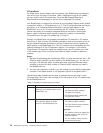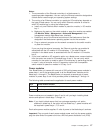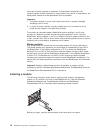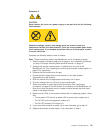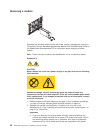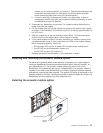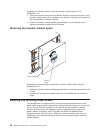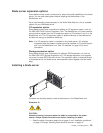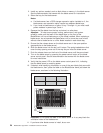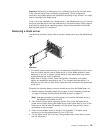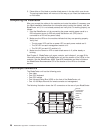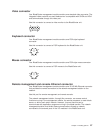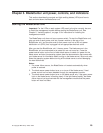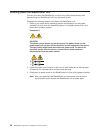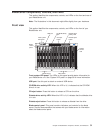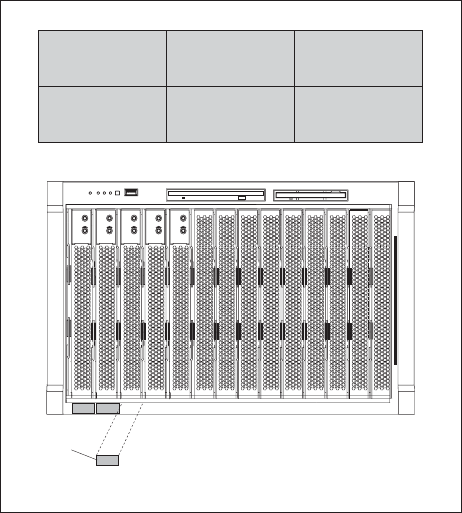
2. Install any options needed, such as disk drives or memory, in the blade server.
See the documentation that comes with the blade server for instructions.
3. Select the bay for the blade server.
Notes:
a. If a blade server has a SCSI storage expansion option installed on it, the
blade server and expansion option require two adjacent blade bays.
b. If you install a blade server or option in bay 7 through 14, you must install
power modules in power bays 3 and 4.
4. Remove the filler blade from the bay and store in a safe place.
Attention: To help ensure proper cooling, performance, and system
reliability, make sure that each of the blade bays on the front of the
BladeCenter unit has a blade server or filler blade installed. When replacing a
blade server, do not operate the BladeCenter unit for more than one minute
without either a blade server or a filler blade installed in each blade bay.
5. Ensure that the release levers on the blade server are in the open position
(perpendicular to the blade server).
6. Slide the blade server into the bay until it stops. The spring-loaded doors that
cover the bay opening move out of the way as you insert the blade server.
7. Push the release levers on the front of the blade server until they are closed.
8. Turn on the blade server by pressing the power-control button on the blade
server control panel. See the documentation that comes with the blade server
for more instructions.
9. Verify that the power LED on the blade server control panel is lit, indicating
that the blade server is receiving power.
10. If desired, write identifying information on one of the user labels that come with
the blade server; then, place the label on the BladeCenter bezel just below the
blade server, as shown in the following illustration.
User
label
Important: Do not place the label on the blade server or in any way block the
ventilation holes on the blade server.
11. If you have other blade servers to install, do so now.
24 BladeCenter Type 8677: Installation and User’s Guide



